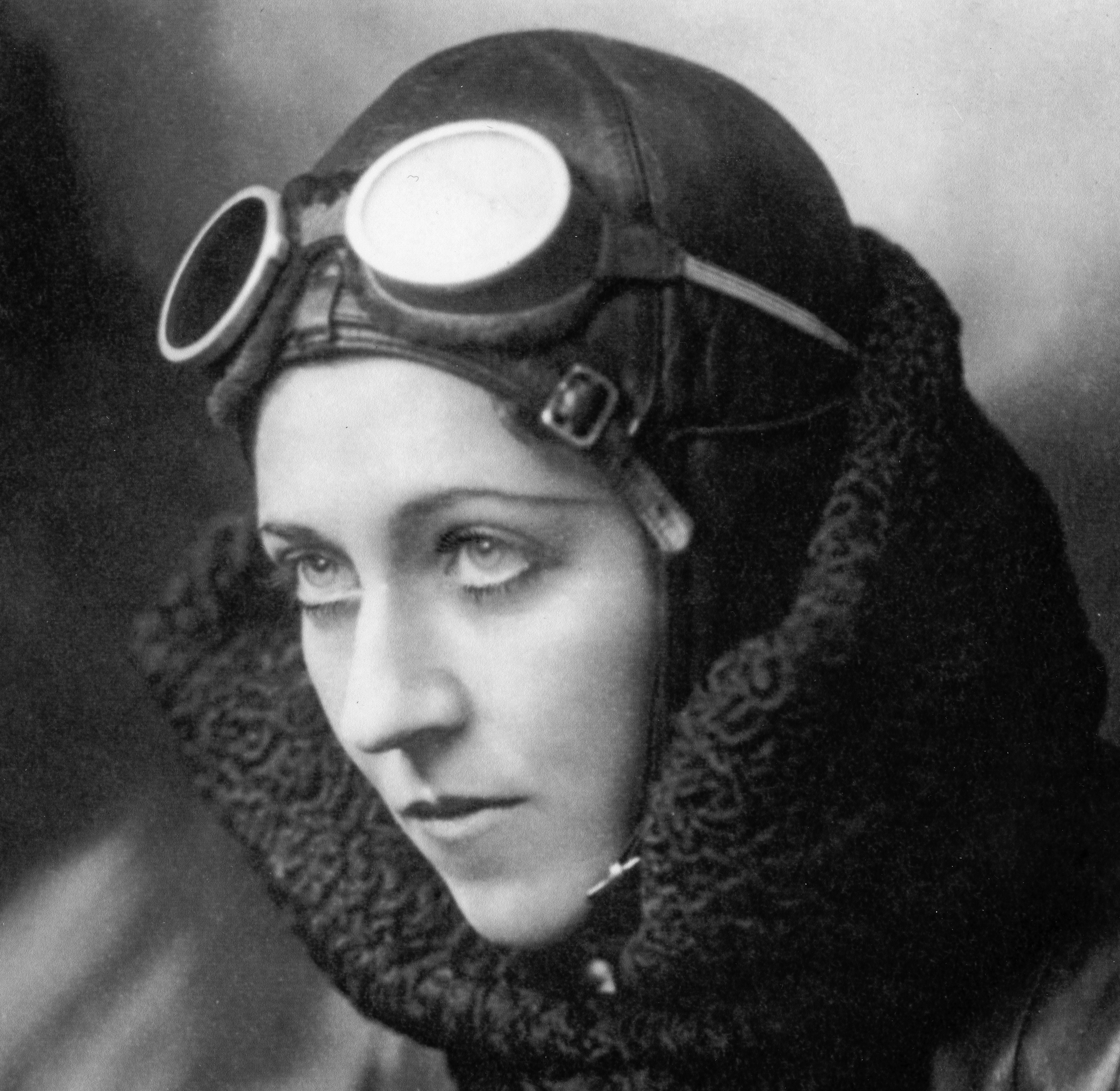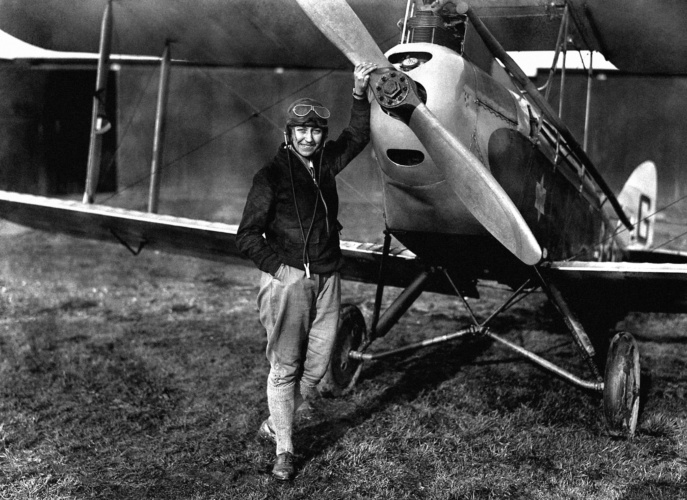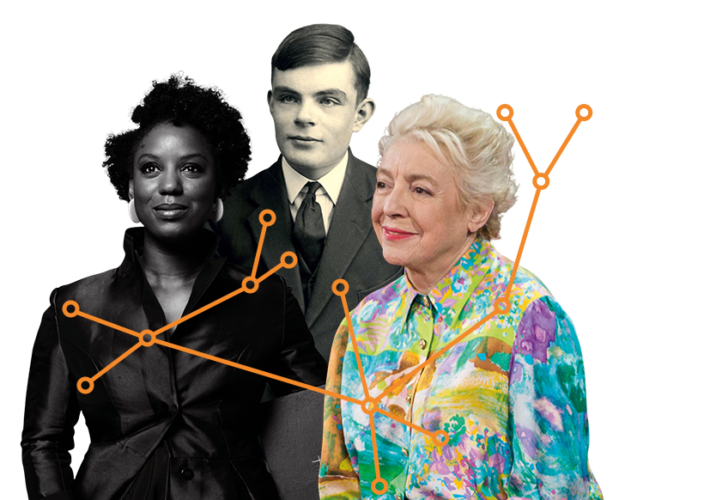Birthplace of air traffic control and of the ‘mayday’ signal, Croydon Airport – Britain’s only international aerodrome of the interwar years – was the point of departure for what was to become one of the most famous flights of the 20th century.

On 5th May 1930, 26-year-old Amy Johnson embarked on her record-breaking solo flight to Australia. Her plane was a second-hand Gypsy Moth called Jason that she’d bought for £600 (or around £40k in today’s money.) With a top speed of 105 mph (approx 170kph), a 100 horse-power engine and a foldaway wing construction, Jason was hardly cutting-edge technology. But, said Johnson, “the engine was wonderful,” a phrase that was to pass into the English language to describe anything that had hidden qualities, and still (in paraphrased form) much beloved of used-car salesmen. Had she been a man, she claimed, she would have explored the polar icecaps or climbed Mount Everest: “but as it was, my spirit found outlet in the air.”
She also found international fame which she converted into a career as a fashion model, journalist and entrepreneur. The outbreak of the Second World War saw her return to aviation in the service of her country in the Air Transport Auxiliary. It was in this capacity while on a routine ‘ferry flight’ that she met her tragic end in circumstances that have not been adequately explained, are still a matter of controversy, reinforce her mystique and guarantee her immortality.
Amy Johnson was born in 1903 into a sturdy mercantile Yorkshire family. Her mother was the granddaughter of a Mayor of Hull, her father a successful fish merchant. Such everyday origins led her along a typical path for middle class women of the day: after starting her education at Boulevard Municipal Secondary School she went to the University of Sheffield where she read economics.
To put distance between her and a failed love affair, Johnson relocated to London to start a new life that was initially no more exciting or glamorous than working in the typing pool at a legal firm. Nothing in her background or upbringing so far gave any indication of the ground-breaking career that lay ahead. According to Johnson’s biographer Midge Gillies, author of Amy Johnson: Queen of the Air, that would all change when, “at a loose end one Sunday afternoon she boarded a bus that took her to Stag Lane Aerodrome in North London. She was immediately captivated by the primitive biplanes she watched taking off and landing. Soon she started to spend all her time at the aerodrome.”
It was a bus ride that was both to transform Johnson’s life and ultimately provide women with a role model. Such was her infatuation with flying and determination to succeed in the world of aviation that Johnson was able to overcome barriers of social class – women pilots tended to be from the gentry: Lady Heath, the Duchess of Bedford and Lady Bailey – to gain her aviator’s certificate (No.8662) and her pilot’s ‘A’ licence (No.1979), both at the London Aeroplane Club under the tutelage of Captain Valentine Baker.

According to an article in Aeroplane Monthly, in that same year Johnson also became the first British woman to gain a ground engineer’s ‘C’ licence. With connections to the aeroplane manufacturing industry (her friend Fred Slingsby owned Slingsby Aviation that made gliders), she was able to join the Yorkshire Gliding Club. With the help of others such as Lord Wakefield, and with her father’s financial support, she was able to buy the now legendary de Havilland DH.60 Gipsy Moth G-AAAH that she would name Jason after one of her father’s trademarks.
Johnson was nothing if not ambitious. Prior to her flight to Australia the furthest she’d ever flown was from London to Hull. To say that her route planning was rudimentary would be something of an understatement, as she simply laid a ruler across a map of the world and followed a direct line. This lack of pretension is in keeping with the technology available to her. With no radio ground link, she was unable to communicate in the way modern pilots do, while the lack of reliable meteorological data meant that she was unable to predict or avoid monsoons in Rangoon. Cartography was basic to say the least, and at times non-existent. Gillies says that one of the disadvantages of Johnson’s approach was that her route demanded flying over uncharted land as well as some of the world’s most inhospitable terrain while seated in an open cockpit for eight-hour stretches. There was no room for improvisation: “it was essential that she kept to her route because fuel was waiting for her at each stop.”
Despite the obvious seriousness of Johnson’s proposed endeavour, the Daily Mail predictably focused on the pilot’s gender, while concocting a headline trumpeting (completely erroneously) that the aviatrix had departed with a “cupboard full of frocks.” But before long the sheer scale of Johnson’s enterprise was starting to attract more balanced attention from the media who had changed their tune to the extent that Johnson, by the time she had reached India in a record six days, was now the “British Girl Lindbergh”, “Wonderful Miss Johnson” and “The Lone Girl Flyer”.
It's a pity to lose the romantic side of flying and simply to accept it as a common means of transport
Amy Johnson (1903 - 1941)
When she arrived in Australia on 24th May she was famous, greeted by tumultuous crowds and treated like a superstar. Women had their hair permed with an “Amy Johnson wave,” while songwriters fell over themselves to cash in on the phenomenon, with “Amy, Wonderful Amy” sung by Jack Hylton perhaps the best known. Not to be outdone, Britain’s reigning monarch George V, in his 1930 Birthday Honours, bestowed upon Johnson the CBE in recognition of her flight to the far side of the world.
For the following decade Johnson’s life was a whirlwind of aviation achievement. Jason was superseded by Jason II (a de Havilland DH.80 Puss Moth G-AAZV) in which she and co-pilot Jack Humphreys became the first to fly from London to Moscow in a day, from where they continued to Tokyo, setting the record time for a flight from Britain to Japan. In 1932 she married Scottish pilot Jim Mollison who had made his airborne proposal of marriage a mere eight hours after meeting Johnson. In 1932 she set a solo record for the flight from London to Cape Town in South Africa, beating her new husband’s record.
The following year, the couple crossed the Atlantic, flying from Wales to New York where they were forced to crash land due to running low on fuel. With another world record under her belt, Johnson became the darling of the American elite, was given a ticker tape parade in the Big Apple and was entertained by President Theodore Roosevelt. Another flight to South Africa set another record. She was awarded the gold medal of the Royal Aero Club and the RAC’s Segrave Trophy. Exhausted by the non-stop flights, Johnson turned her attention to business, fashion and journalism. Ever successful, she modelled for Elsa Schiaparelli, the world’s most famous between-the-wars fashion designer, and created her own travelling bag.
Johnson came down to earth with a bump when Britain entered the Second World War. She joined the Air Transport Auxiliary, a civilian organisation that supported the RAF by ferrying new, repaired and damaged military aircraft between factories, airfields, delivery points and repair units.
On 5th January 1941 she departed from Blackpool in an Airspeed Oxford that was scheduled for delivery at RAF Kidlington, near Oxford. In adverse weather conditions, off course and out of fuel, Johnson bailed out over the Thames Estuary near Herne Bay where she was spotted by a convoy of wartime vessels descending by parachute. In poor visibility Lt Cmdr. Walter Fletcher, captain of HMS Haslemere manoeuvred his ship to rescue the pilot. The crew thew out ropes to no avail, with Fletcher himself diving into the water to save her. In the confusion witnesses believed that they saw a second body in the water. Neither was recovered while Fletcher, who may have proved to be a valuable eyewitness, soon died of exposure. A recent theory that Johnson had been shot down by friendly fire is now discredited, although the exact details of her untimely death at the age of 37 will probably never be known.
Celebrate engineering's pioneers and ground-breakers

The Institution of Engineering & Technology (The IET) - sponsor of The Engineer's Late Great Engineers feature - is celebrating some of the incredible people who have made an impact in engineering and technology. Let the institution know who you think has made a difference by nominating a pioneer or groundbreaker today:










McMurtry Spéirling defies gravity using fan downforce
Ground effect fans were banned from competitive motorsport from the end of the 1978 season following the introduction of Gordon Murray's Brabham...